 |
|
 |
Delivery/Storage
|
The Delivery area of a restaurant offers
teen workers an opportunity for developing skills in communication,
material handling, and inventory control. Teen workers in this area
may also be exposed to the following hazards:
|
|
 |
 |
|
Strains and Sprains |
Potential Hazard
 |
Remember:
Child
Labor Laws do not permit employees younger than 18 years old
from operating forklifts or employees younger than 16 from
loading or unloading goods on or off trucks, railcars, or
conveyors. |
Workers can injure themselves during reaching and lifting of heavy loads while unloading and
stacking supplies for restaurants. The risk of injury
increase if done in awkward postures.
|
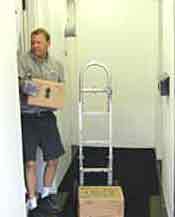 |
Possible Solutions
|
|
Employers have the primary
responsibility for protecting the safety and health of their
workers. Employees are responsible for following the safe work
practices of their employers.
|
- Stack heavier items on lower shelves.
- Store lighter goods on the top shelves.
- Stack items used most frequently at a convenient waist level.
- Get help lifting heavy items.
- Use a stool or ladder to access items on shelves. Do not stand on
chairs or boxes that might tip over.
- Lighten the load to be lifted by
encouraging employer to purchase smaller and therefore lighter cartons of stock.
- Use proper lifting techniques
when performing manual lifts to minimize the risk to
the back. However, a heavy load (35 pounds or more for teen
workers) can
cause injury even with perfect technique. Do not
manually lift heavy loads alone; get help.
- Use handrails if traveling on stairs, avoid undue speed, and
carry only items that you can safely see over.
|
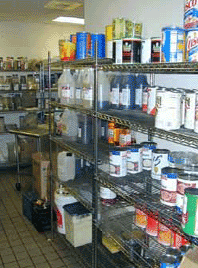 |
- Limit lifting by hand. Use hand
carts when moving products. Have employees 18 or older use any
available mechanical equipment such as lift
assist devices, forklifts, and pallet jacks to help with lifting
and transporting products.
|
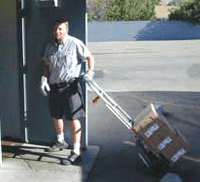
|
Use proper lifting
techniques. Learn to lift properly
and stay fit to help reduce the risk of injury from lifting.
- Before lifting, size up the load:
- Wear gloves to prevent exposure to nails and slivers.
- Use a hand cart if possible.
- Get help with heavy loads.
- See that the load is balanced and stable.
- Do not lift a load that is too heavy, slippery, hot, or unevenly
balanced.
- Make sure you have a clear traveling path.
|
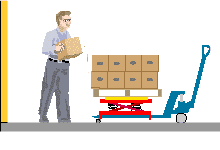
A palletizer on a pallet jack lifts the load to a convenient level.
|
- Lifting:
- Bring the load as close to you as possible before
lifting. Avoid reaching across something to lift a load. This
moves the load away from the
body and increases your chance of injury.
- Lift with your legs, not your back.
- Keep your head up, your back straight, and bend at your hips.
- Shift your feet to turn; don't twist your body.
- Keep the load directly in front of your body. Avoid reaching to the side and lifting while twisting.
- Perform lifts at waist height, with the elbows in close to the body.
- Avoid
awkward postures while lifting such as reaching
and twisting, or lateral or side bending.
|
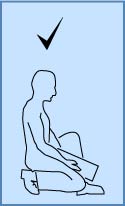
Lift with your legs.
|
|
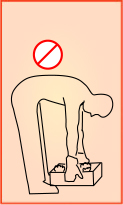
Don't lift with your back.
|
- Remember that body position when setting the load down is just as important as
when picking the load up. Use your leg muscles to comfortably
lower the load by bending your knees.
- Make certain that your fingers and toes are clear before setting the load down.
|
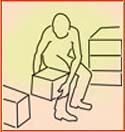
Avoid lifting while twisting.
|
|
|
Employers have the primary
responsibility for protecting the safety and health of their
workers. Employees are responsible for following the safe work
practices of their employers.
Follow the
Fair Labor Standards Act (FLSA)
that
prohibits workers:
|
 For more information see Resources - Child Labor Laws.
For more information see Resources - Child Labor Laws.
|
Additional Resources:
- OSHA's Grocery Warehousing eTool: Work
Practice. Bad habits to avoid while lifting or transferring products.
-
Ergonomics.
OSHA's ergonomic strategy for success.
|
|
 |
|

